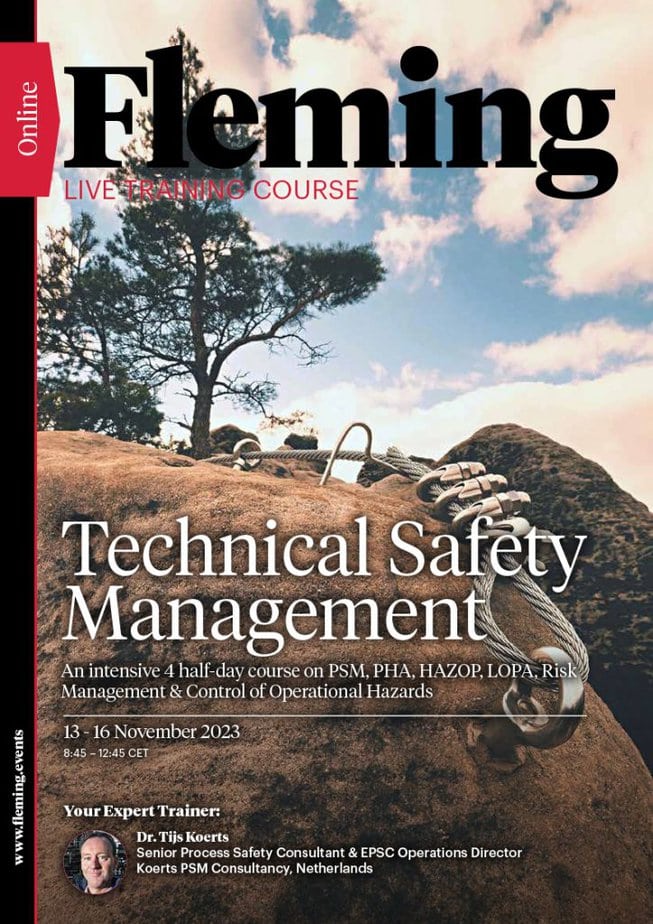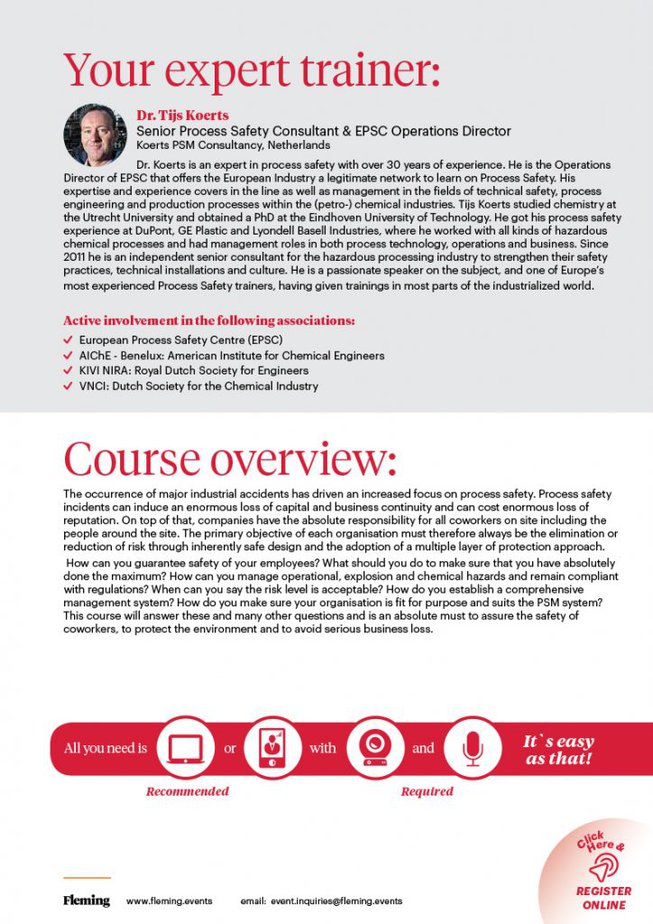Course description
The occurrence of major industrial accidents has driven an increased focus on process safety. Process safety incidents can induce an enormous loss of capital and business continuity and can cost enormous loss of reputation. On top of that, companies have the absolute responsibility for all coworkers on site including the people around the site. The primary objective of each organisation must therefore always be the elimination or reduction of risk through inherently safe design and the adoption of a multiple layer of protection approach. How can you guarantee safety of your employees? What should you do to make sure that you have absolutely done the maximum? How can you manage operational, explosion and chemical hazards and remain compliant with regulations? When can you say the risk level is acceptable? How do you establish a comprehensive management system? How do you make sure your organisation is fit for purpose and suits the PSM system? This course will answer these and many other questions and is an absolute must to assure the safety of coworkers, to protect the environment and to avoid serious business loss.





